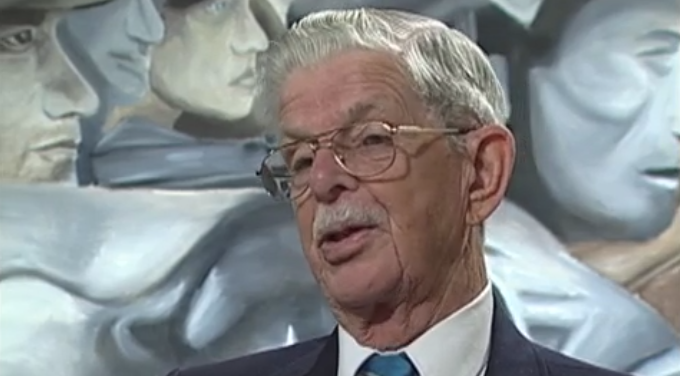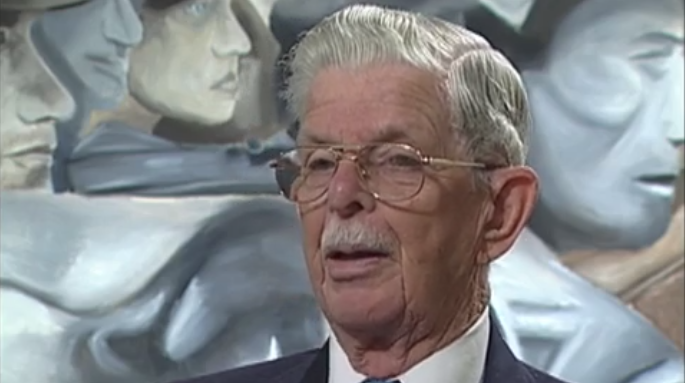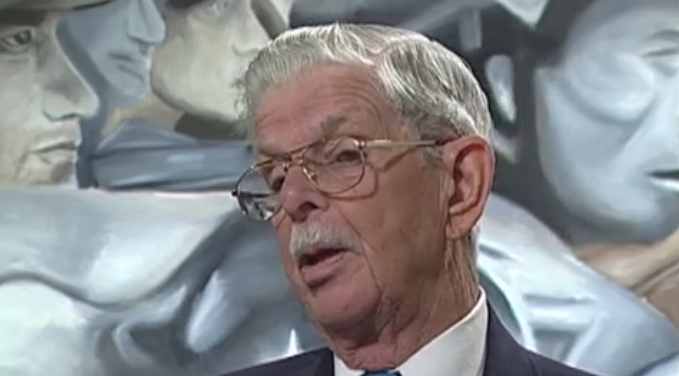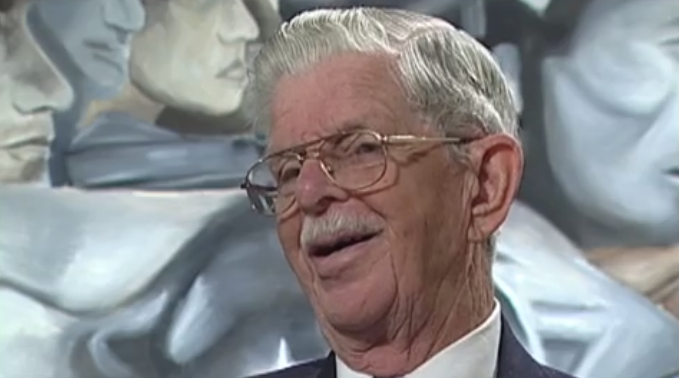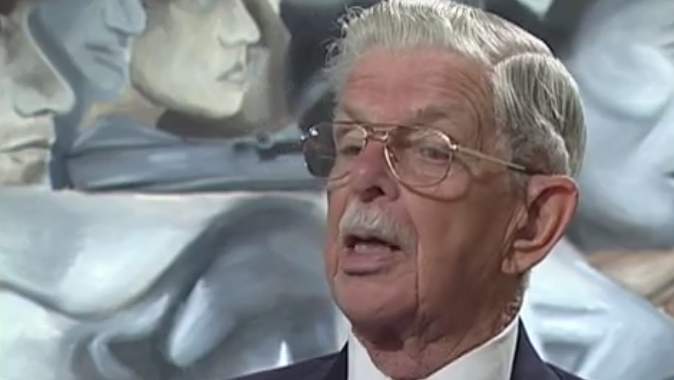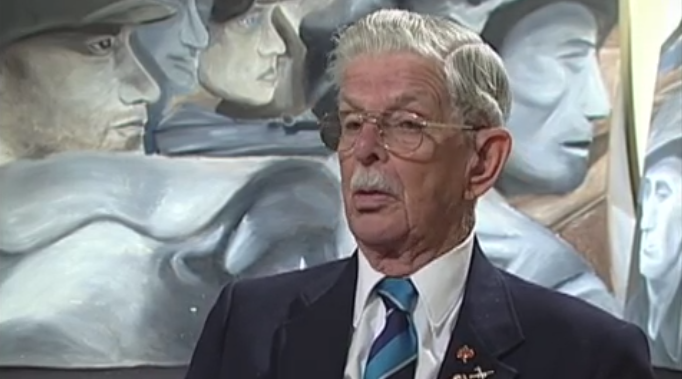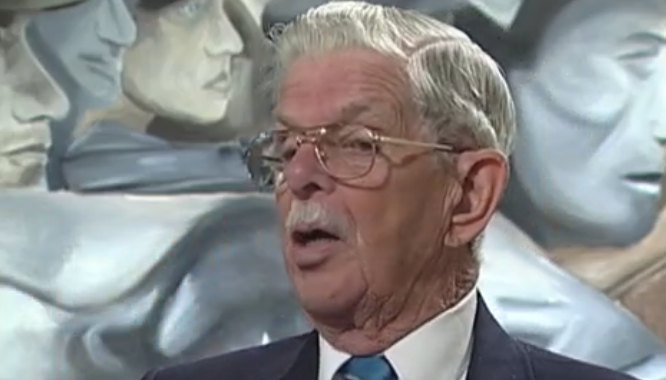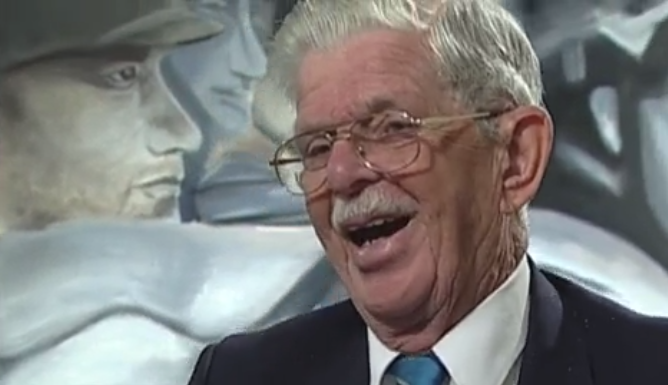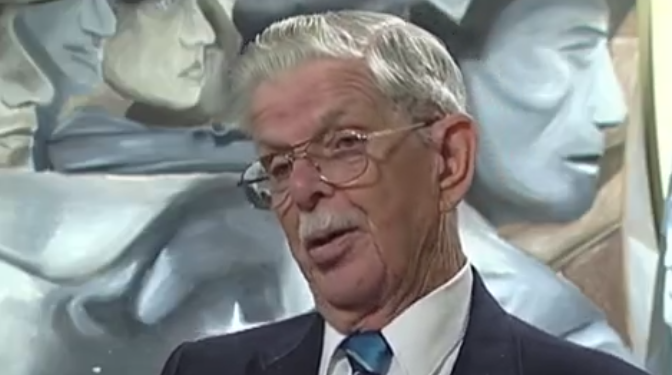And the tail turret is really quite a, quite a novel place.
The first time you get back in that tail turret and you start
looking around a little bit and you realize "Oh yeah,
the tail's back there somewhere.
Oh yeah tail planes are way over there."
You're, you are really on the tip, believe you me.
There's nothing on either side of you, or above you,
or below you, you just got two big pins holding that turret on
there; one on the bottom, one on top.
And we carried a tremendous amount of ammunition,
in the tail turret. We carried 10,000 runs,
rounds per gun and those belts of ammunition were fed down
through the bottom of the turret, on trays, and out,
then out to the sides of the aircraft;
two going to the port side and two going to the starboard side
and where they went into great big pans which were fed
or hung on the side of the aircraft.
You had a, you had a lot of ammunition, if you had to use it.
And of course the ammunition varied too, you,
you carried armoured piercing, just the regular lead nosed,
you carried the tracers, and tracers give you a better idea of
where your shells were going, when you're firing, because they,
they light up all the way. But it took a little bit of practice
‘cause you had, if, if, if somebody was coming in from the side
and you couldn't get a direct shot at him straight on,
you'd had to start a line for your deflection shooting,
which gets to be a little more tricky,
because you gotta allow for him travelling forwards,
so you gotta shoot in front of him,
so that he runs into your shells when he's coming at you.
It's very straight forward, you're sitting there,
you got two guns over here and you got two guns over here
and you got your view finder right there and you got a controls
which is just like a bicycle, a handle and the triggers are
on the, on the handle. All four guns fire at once.
There's not, you can't fire the two guns separately.
When you pull that trigger, all four guns fire.
And naturally, if you turned to the left,
your whole turret moves to the left as far as it will go.
And of course you have special fairings so that you can't
shoot off your tail. Of course you can't shoot off your rudder
back there because you can't get around to there.
And the guns will elevate ‘til almost,
‘til almost shooting straight up and they'll depress
‘til they're pretty a long way down,
I wouldn't say quite straight down, but coming pretty close to
being straight down. So you got a good range of periphery for the
operation of those guns. If you wanna be deaf,
just fire them for a little bit and you'll find out what it's
like. The spent shells are auto, automatically ejected out of
the turret, just into space. And the belts of ammunition come up
in between your legs and up to the two guns, the four guns.
And course you do have guns jam quite regularly but then with
the experience you have, you know the gun well,
you know how to clear a jam and usually can get
that gun going in very, very short order.



